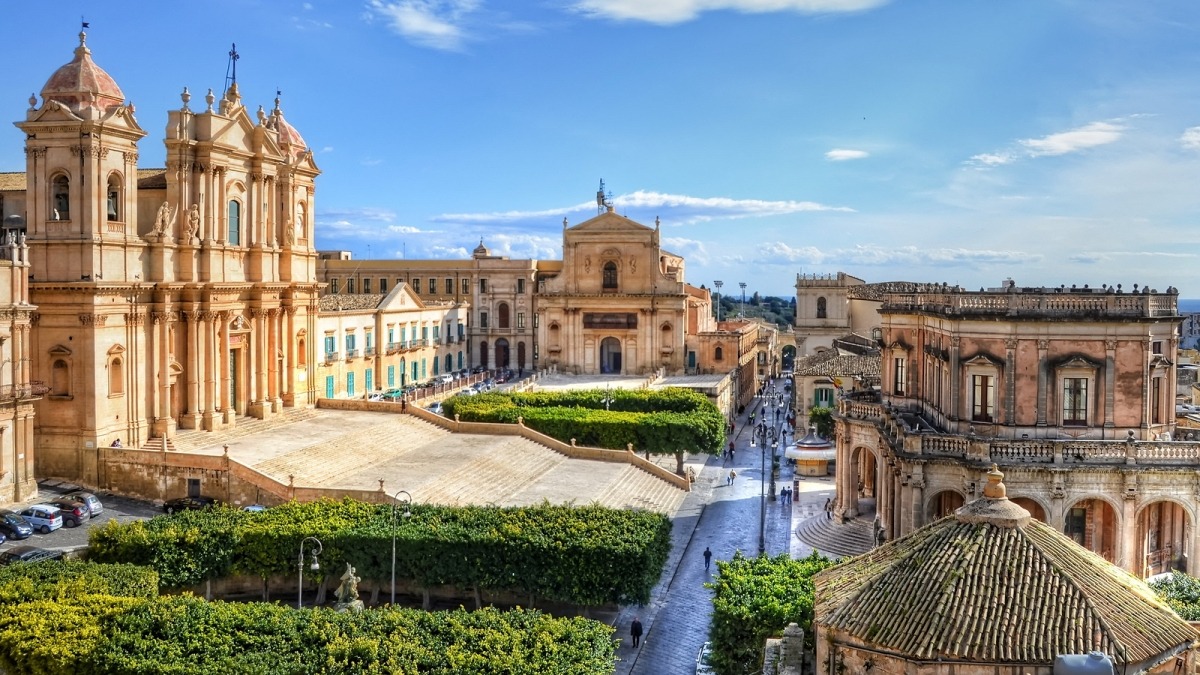The revival of a cathedral
Noto is an amazingly beautiful baroque town, nestled amongst the hills of the Val di Noto. The Noto of today, as so many other towns in this region, is a result of a long reconstruction effort after the devastating earthquake of 1693. After the earthquake, the people of Noto moved from what is now called Noto Antica (which we will soon be talking about) to the current position. The reconstruction of the city was based on the baroque principles of open town, with straight and parallel streets, leading to what the UN World Heritage site calls the "culmination and final flowering of Baroque art in Europe".
The Noto Cathedral, which represents the focus point of these efforts, presented the town with another reconstruction challenge 300 years later, when its dome collapsed six months after an earthquake, on March the 13th 1996. Four pieces of the right part of the nave, one of the four bridgepiers supporting the dome, the entire roof and vault of the nave, three quarters of the drum and the dome with the lantern, and many smaller domes were all lost.

The reconstruction of the cathedral has now been underway for eight years and along the way has faced several difficulties (from disputes about the way the reconstruction should take place to disputes about financing, etc). Although the ideal of the reconstruction was to have the dome 'where it was, and just like it was' this was clearly not possible since the same stones could not be used and some of the errors of the initial construction of the 17th century that led to the collapse should plainly not be repeated. Also some of the errors of the more recent past, such as the replacement of the original pitched roof with a cement roof at the end of the 1950s, which was much heavier and contributed to the eventual collapse, should not be repeated. Finally, there was the issue of whether to build the dome as it was when the church was first built or as it was when reconstructed in 1862 after yet another earthquake. Eventually, it was decided to go with the 1862 version, since it is the one that came to define the Noto skyline.
After all the wrangling and debating it seems that the cathedral is now on a solid path of progress. We will be visiting Noto in August and will post the updated pictures of its current status.







